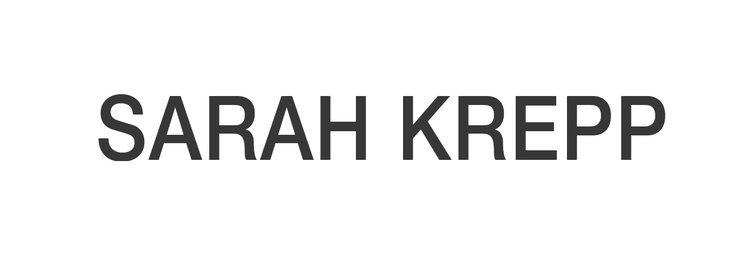Sarah Krepp's White Noise
Once it just referred to the background din of static in radio transmissions. Now, in our media-saturated environment, filled with the operations of sampling, layering, mixing, and remixing, the term "white noise" is applied to a great range of perceptual circumstances. Indeed, there need be neither noise nor whiteness for us to recognize the multivalent effect we characterize by that name. Sarah Krepp locates her ongoing series of paintings, drawings, and collages under the heading of White Noise, and it is no stretch of the imagination to comprehend the visual equivalent of an electronic hum in the densely layered material, technical, and textual effects in her art. From the beginning of her exhibiting career Krepp has shared with us her passion for process and color. What's been added to her repertoire in recent years is a sophisticated deployment of fragmentary and not quite legible linguistic elements that seemingly invite viewers to "read" her work as well as being absorbed with its optical pleasures. The present exhibition provides us with a suite of paintings filled with bits of text and graphic symbols borrowed from science, art, and mysticism, but it would be foolhardy for viewers to attempt to read between these lines. It is precisely Krepp's point that the recognizable signifiers she situates in her pictures are disengaged from any sensible context. These letters, numbers, arrows, and related typographical devices are afloat in seas of pigment, slathered brush strokes, pierced by scribbles in pencil or paint, and finally sealed in a surface of galkyd medium that gives them a pouty and voluptuous "come thither" sheen. Krepp means for use to see each painted sea as the ultimate "white noise," casting a pictographic residue upon the beachhead of our consciousness. Thus, a distant murmur of the Odyssey arises in her art. The combination of linguistic incoherence and luscious palette in these paintings is a calamity for our attentions, for we cannot simultaneously decode them and hold in our minds the pleasure of their play of colors and forms. The effectiveness with which Krepp sites this dilemma in the work reveals her critical intent: that in assigning the status of a system to her symbols, viewer's privilege recognition over perception. This illusion of readability is a kind of siren song that beckons the yearning attentions of viewers and just like in Homer's epic; the beguiling melody is, in fact, silent. After all, we don't literally hear the song of the sirens. We don't even actually read it. The song is a narrative absence that, the poet warns us, could be fatal to actually experience, but since it's not to be found on the page we are endlessly free to imagine its treacherous notes. Similarly, if less dangerously, those viewers who strive too hard to decipher the textual fragments in Krepp's work must turn away, so to speak, from its unspeakable beauty.
Buzz Spector Catalogue Essay, 2002

